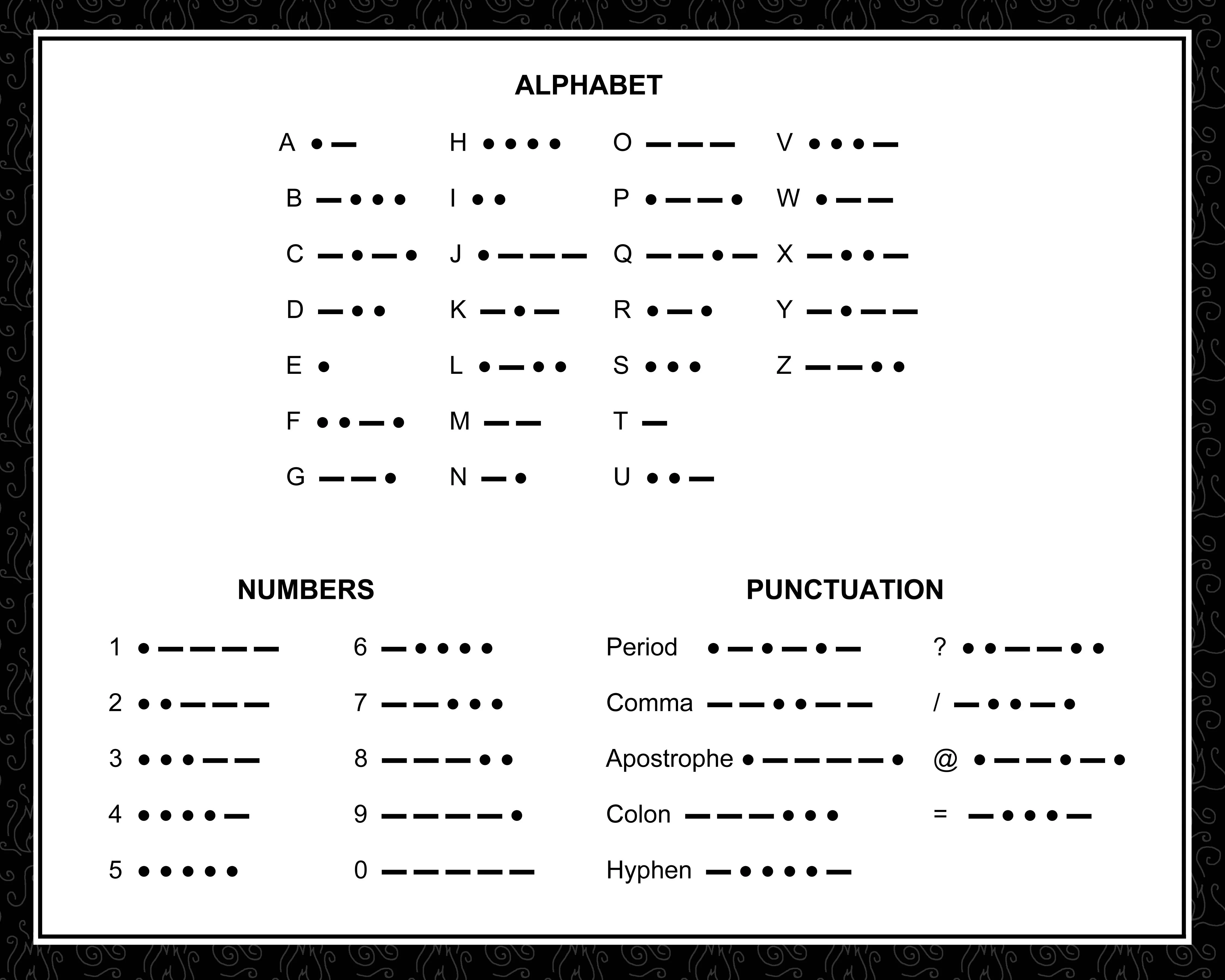Introduction to Morse Code:
Morse code is a method of encoding text characters using sequences of dots and dashes to represent letters, numbers, and punctuation.
Invented by Samuel Morse and Alfred Vail in the early 1830s, Morse code has a rich history in communication, especially in telegraphy.
Fundamentals of Morse Code:
Morse code uses combinations of short and long signals, commonly referred to as dots (.) and dashes (-). Each letter of the alphabet is represented by a unique combination of dots and dashes.
Morse code can be transmitted using sound, light, or touch, making it versatile in various communication mediums.
Beyond the Alphabet:
Morse code is not limited to letters; it also includes representations for numbers and common punctuation marks.Numbers 0-9 have unique Morse code patterns. Punctuation marks like period (.), comma (,), question mark (?), and others are also encoded.
Decoding the Morse Code:
Here's the Morse Code representation for each letter of the alphabet, numbers and other symbols:

Applications of Morse Code:
Despite its age, Morse code is still relevant today and finds applications in various fields:
-
Emergency situations:
Morse code can be used for distress signals in emergencies.
-
Aviation and maritime communication:
Pilots and sailors are trained in Morse code for communication in case of electronic failures.
-
Legacy:
Morse code played a crucial role in early long-distance communication and has left an indelible mark on the history of telecommunication.
Fun Exercise:
Do have fun in translating the morse code based on what you've seen in the post!
-.-- --- ..- / -.. .. -.. / .. - / -.-.--
Scroll for the answer!
.
.
.
.
.
.
The answer is: You did it!
